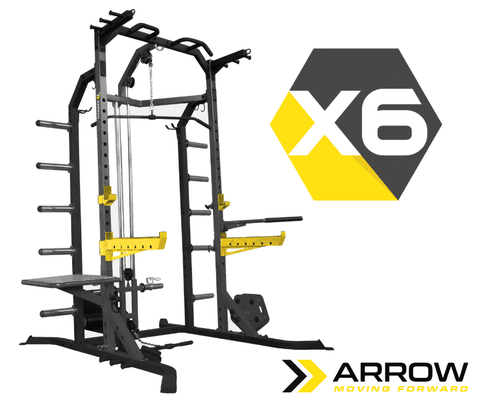
What kind of workout exercises should beginners be doing?
So you've decided to pull up your socks and pick up the weights and embark on your fitness journey? Trust us, there are only good things to come!
Engaging in your health and fitness will see you reaping the benefits almost immediately, for both your mind and body. While it's easy to throw yourself into the dreamland of fitness, starting a routine and sticking to it has its challenges, and it's best to develop your plan considering some essential starter tips.
If you're eager to begin your journey but aren't too sure where to start, this article is for you. We've gathered up our best tips and tricks to help you stick to a routine and strive for the healthiest you!
WARM-UP AND COOL-DOWN
Warming up is the first thing you should do, and the first thing new-starters will forget to do. If you have been out of the gym for a while, your muscles will be in for a rude shock when you start back up, so it's important to ease into your gym routine.
There are a few ways you should warm-up:
- Stretch. Be kind to your body and spend 5 minutes before and after your workout stretching. If you are an outside workout person, investing in an easy-to-carry yoga mat will make your whole warm-up AND cool down experience that much more comfortable.
- If you're looking to do a weight session, it is best to warm-up your whole body by doing just 5 minutes of cardio beforehand. Whether it's on a treadmill, on the bike, in the great outdoors, or the cross trainer, it will ensure that your body is primed and in the zone to burn calories before you do a set.
- After the 5 minutes of cardio, it is best to do your first set of reps with light weights and with more reps. Usually, for each exercise, you will do 3 sets of 12 reps. For your first exercise, try to complete 4 sets of 15 reps at a lower weight. This will ensure that your muscles aren't thrown in the deep end and working too hard too quickly but instead are warmed up more slowly. This will help to avoid pulling any muscles too.

LISTEN TO YOUR BODY
Starting out your fitness journey will hurt when you start. But there's a clear difference between hurting in the way that means you are making progress and pain that means you have pushed it too far. When you start out, it is a good idea to take it slow. Start with light weights, slow cardio, or choose the shorter class options. Stick with a 45-minute work out at the start and work your way up to an hour.
PLAN A DIVERSE RANGE OF EXERCISE
There are so many different styles of exercise, and when you start out, we encourage you to try them all. You might be surprised with the style of exercise your body wants more of, so try that dance class, stretch in yoga or lift those weights to give your body the option to choose for itself. It is always important to mix up the styles of exercise you partake in, to ensure that your muscles are constantly being tested and your mind is kept engaged too. If you're not sure where to start, here is a list of the styles of exercise you might like to participate in:
Strength training does not always mean building muscles to look buff. Strength training involves building muscle AND bone strength, and this helps to develop your balance and coordination too. A general rule of thumb is to isolate muscle groups and work out each one twice a week. You can use your body weight, free weights or multi-gyms to engage in strength training. While bodyweight training ensures the movements are natural, weights can help to get you to the next level of strength. We recommend investing in a weight set with multiple weights so you can build up.
Fundamentally, cardio training refers to your heart rate increasing and is about consistently moving at a moderate level of intensity. You should aim to engage in cardio 2–3 times a week, and you will start to feel the benefits pretty quickly. Some great at-home cardio machines to get you moving include the Arrow X9CT Curve Treadmill/ Air Runner, a treadmill emulating the real thing, and it's electricity-free and burns more calories. Another is the PROFORM 750R Rower
Otherwise known as HIIT, this training is not for the faint-hearted. Precisely as the name suggests, it's INTENSE and aims to involve many muscle groups in big movements that honestly make you feel exhausted. But this is only a good thing! HIIT workouts are generally shorter (think 30 minutes), and a defining feature is the rest time in between sets (usually 30-90 seconds). HIIT training is a fantastic exercise for burning fat and building strength. The dynamic moves also keep your heart rate up, which means ultimately it's hard, but it's definitely effective.
They are different concepts but heavily related. Balance means keeping your body stable without the impact of gravity and flexibility is the ability to control your body during movements. Both are incredibly important for your body to minimise the chance of injury, efficiently complete actions and strengthen your core. Activities such as yoga, pilates and dynamic cardio exercises are great for your balance and stability.
We hope some of our tips and tricks can help you start your fitness journey, and from the team at Southern Cross Fitness, good luck! Remember if you need help, you can find our full range of gym equipment online, and our friendly staff are waiting to chat with you online and in-store to help you get started.
- Choosing a selection results in a full page refresh.
!


